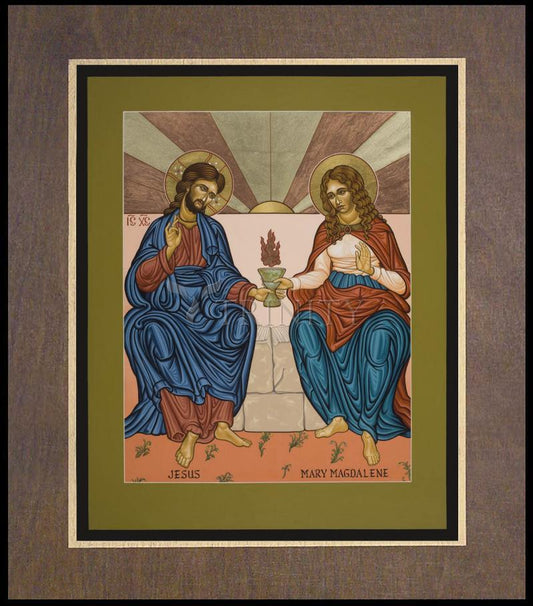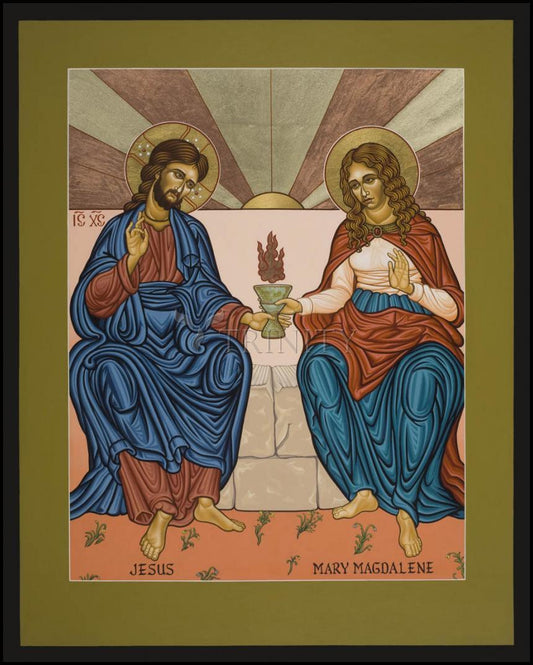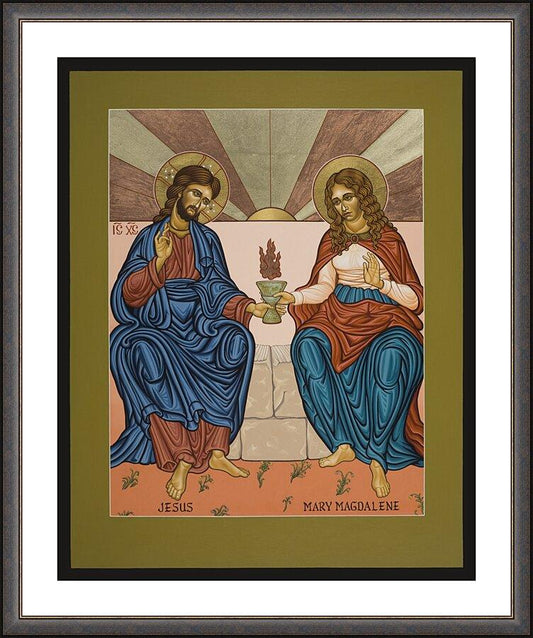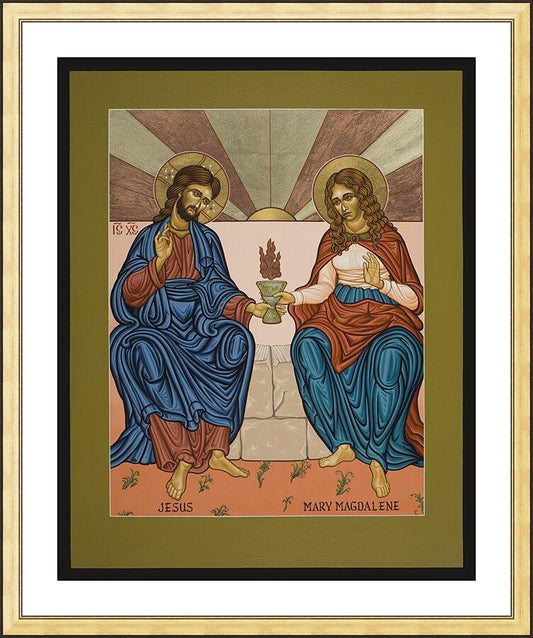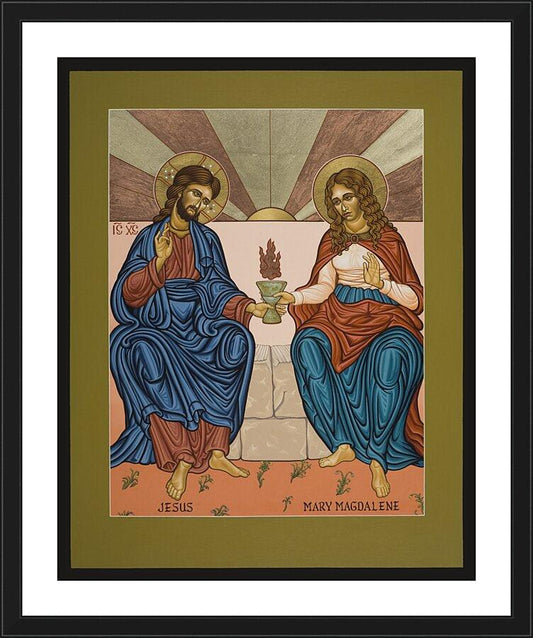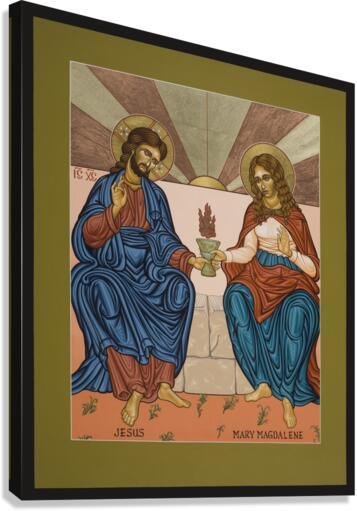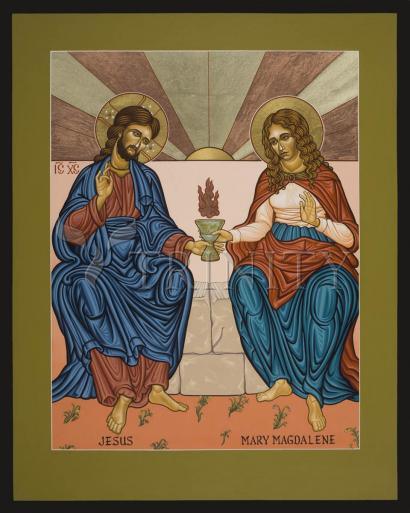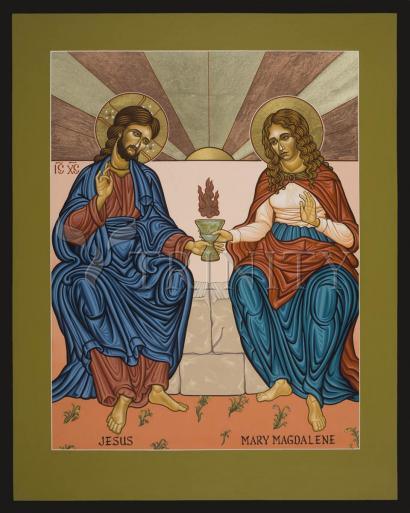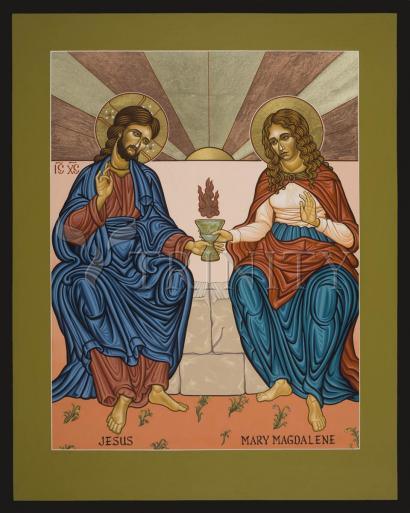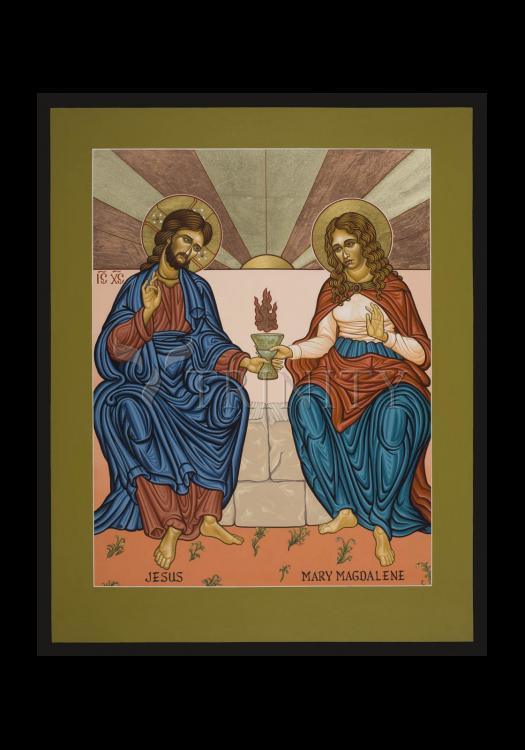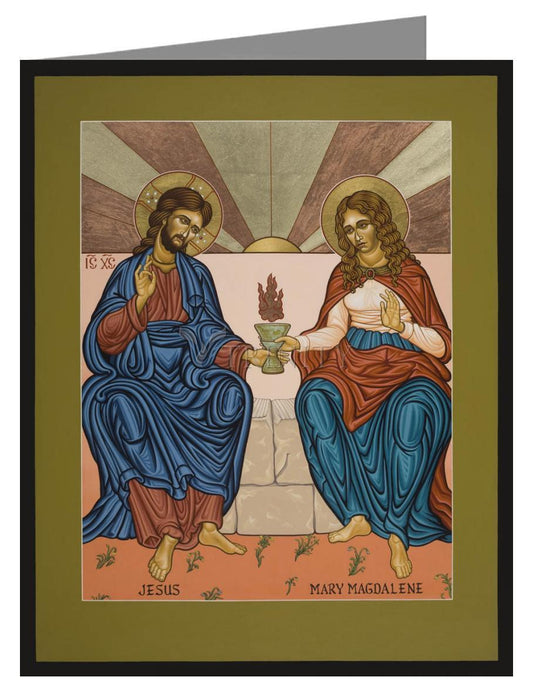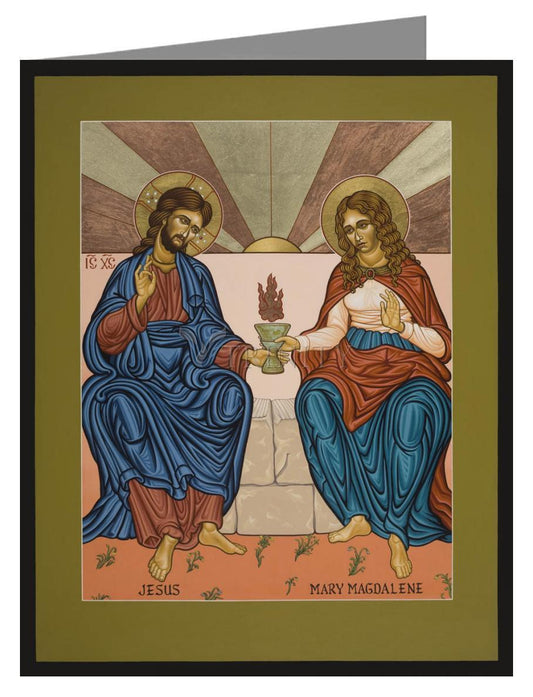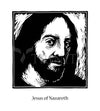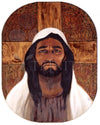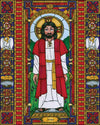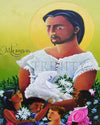ARTIST: Lewis Williams, OFS
ARTWORK NARRATIVE:
Chalices of Mystery Chalices are vessels\\containers for liquid refreshment. Empty, we wish them filled. Full, we imbibe. In this image, the chalice they share is Eucharistic. The space they share is also a chalice, symbolic of one in relation to other, transforming the space between into a container to hold the possible; the mystery. A holy space consecrated by presence, of Christ incarnate in each separately, man and woman, complete in union of the shared chalice. Here is our example of companionship: of journey and purpose. The sun rises: the day is blessed.
The relationship is our example of ministry: of teaching and healing in a broken world. In union of service to the other, we see truth, soul is revealed, light comes in the darkness, and emptiness is filled with promise. We know and are known, ignorance dies and love is birthed. There is no separateness. All is one. All that are weary, burdened in time, find refreshment in this mystery. The Holy Spirit enflames us and we are inebriated, drinking deeply of the covenant.
Did not Mary and Jesus sit together in transformational dialog? Transubstantiation! Real presence! Didn't he in compassion teach that her demons were cured and sins forgiven? Did she not anoint his feet and head, and in love stand by his cross and tomb, finding it empty the next morning and him resurrected? Is not his tomb like a womb that births new life? Is not the empty chalice between us like this womb, waiting to be fruitful and full? By example they showed that life was not merely to be endured but to be abundant. The Kingdom is here and now, not without but within.
Her feast day is July 22.
Read More
The Gospel of Philip describes Mary's relation to Jesus by Coptic variants of the Greek κοινωνός (koinÅnos). That work uses cognates of koinÅnos and Coptic equivalents to refer to the literal pairing of men and women in marriage and sexual intercourse, but also metaphorically, referring to a spiritual partnership, and the reunification of the Gnostic Christian with the divine realm. Mary Magdalene is mentioned as one of three Marys "who always walked with the Lord" and as his companion (Philip 59.6-11). The work also says that the Lord loved her more than all the disciples, and used to kiss her often (63.34-36). Author John Dickson argues that it was common in early Christianity to kiss a fellow believer by way of greeting,[1 Pet. 5:14] thus such kissing would have no romantic connotations. Kripal writes that "the historical sources are simply too contradictory and simultaneously too silent" to make absolute declarations regarding Jesus' sexuality. Bart Ehrman concludes that historical evidence tells us nothing at all about Jesus' sexuality""certainly nothing to indicate that Jesus and Mary had a sexual relationship of any kind". Ehrman (a scholar of the Greek New Testament and Early Christianity) says that the question people ask him most often is whether Mary Magdalene and Jesus of Nazareth married each other. His answer: "It is not true that the Dead Sea Scrolls contained Gospels that discussed Mary and Jesus. (...) Nor is it true that the marriage of Mary and Jesus is repeatedly discussed in the Gospels that didn't make it into the New Testament. In fact, it is never discussed at all"never even mentioned, not even once. (...) It is not true that the Gospel of Philip calls Mary Jesus' spouse".
The "Gospel of Jesus' Wife", a Coptic papyrus fragment unveiled in 2012, presents Jesus as speaking of his wife: "My wife ... she will be able to be my disciple." If genuine, it appears to date to around the 6th to 9th centuries AD, and would suggest that some Egyptian Christians of that period believed that Jesus was married. Although it does not contain the name of Mary Magdalene, there has been speculation that she is the woman referred to. However, there is substantial scholarly concern about the fragment's authenticity, with a number of scholars regarding it as a modern forgery.



